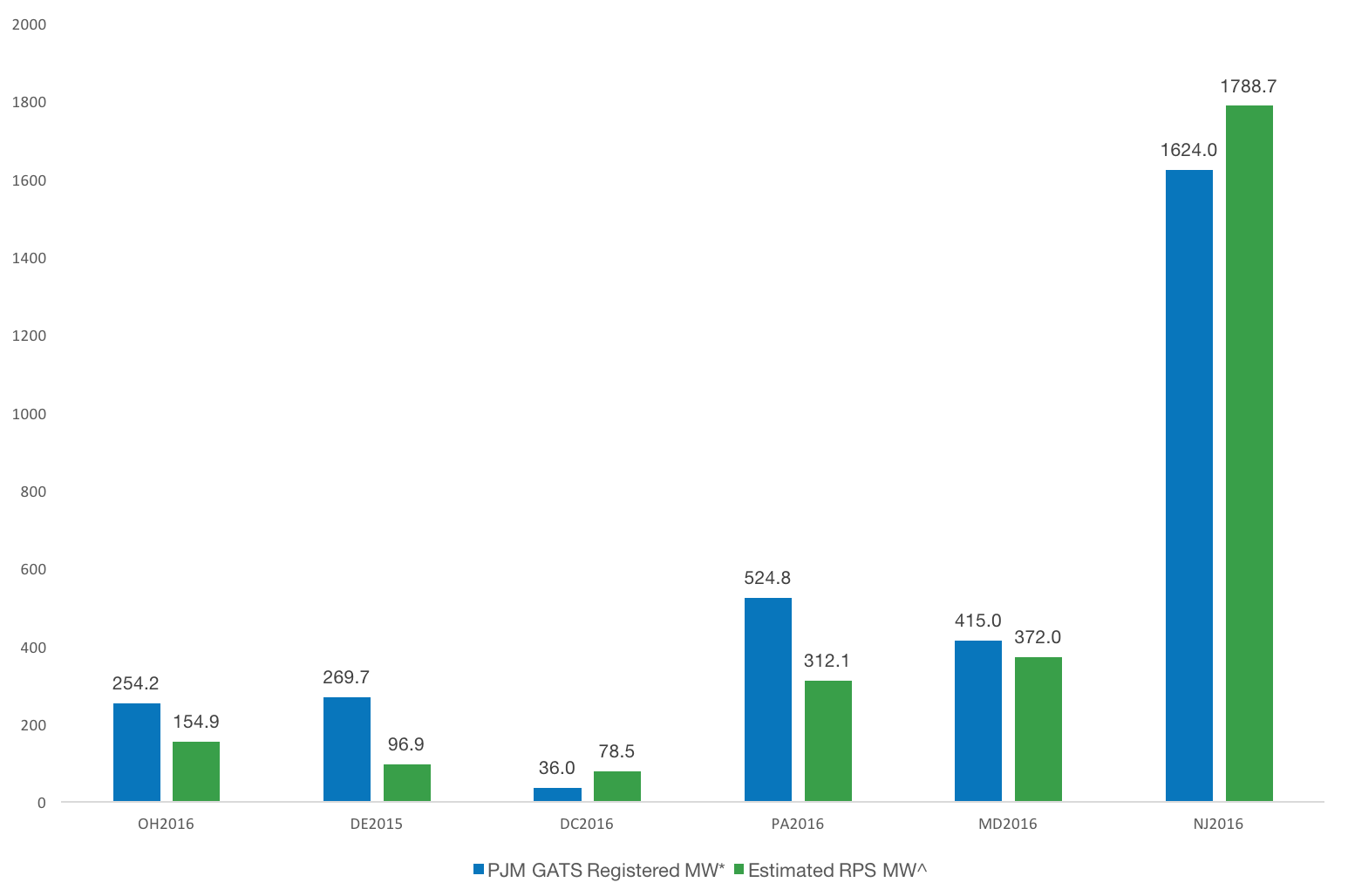On Monday, Maryland’s House of Delegates voted to pass HB1106 with a 92-43 vote. The bill previously known as the Maryland Clean Energy Jobs Act of 2016 was divided into two bills last week, and HB1106 was distilled to focus on the RPS components of the original bill. HB1106, which was retitled to “Clean Energy – Renewable Energy Portfolio Standard Revisions”, schedules an increase to the state’s existing Renewable Portfolio Standard (RPS), including slight increases to the solar carve-out. The increases to the solar carve-out would result in increased demand for MD SRECs. Now that the bill has passed in the house, it will cross over to the Senate for review by the Senate Finance Committee. If SB0921 comes out of the Senate Finance Committee with a favorable report, it will go to the Senate Floor for a vote.
HB1106 was bifurcated from the jobs appropriation component of the Maryland Clean Energy Jobs Act of 2016 last week. On March 16th, the Maryland Public Utilities Subcommittee of the Economics Matters Committee passed three significant amendments to HB1106 to narrow the bill’s focus to the RPS. Notably, these amendments involved:
- Dividing the RPS increase and workforce development components of the bill, leaving the Clean Energy Jobs Act as a stand-alone RPS bill. The Cove Point settlement funds, which would finance the workforce development processes, would be parsed into another bill, HB1404. HB1404 aims to provide funding for construction and vocational work through a new “Center for Education and Innovation.”
- Excluding the Choptank Cooperative from state RPS requirements. This is an extension of the RPS’s current language and allows Choptank to meet its contractual obligations with Old Dominion Electric Cooperative (ODEC), a power supply co-op in Virginia.
- Adding sponsors to the new stand-alone RPS bill, in an effort to achieve bipartisan support of the bill.
The isolation of the RPS legislation from the workforce development components of the bill was received favorably in the House, and the bisection may help to secure the bill’s passage through the Senate Finance Committee and on the Senate Floor.
SRECTrade will continue to provide updates on the status of the Maryland RPS as we acquire new information. For more information on the Clean Energy Jobs Act, please view our previous blog post on the topic here.
Tweet


